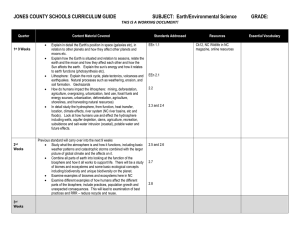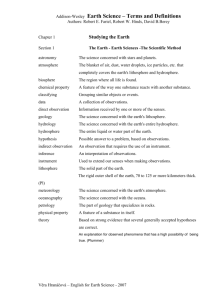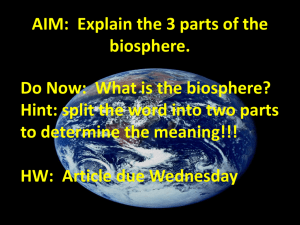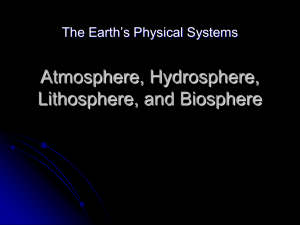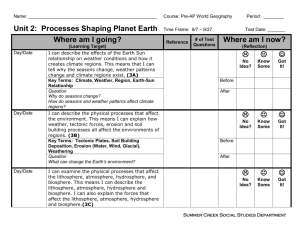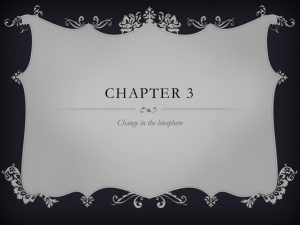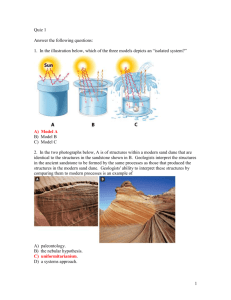Quiz 1
advertisement
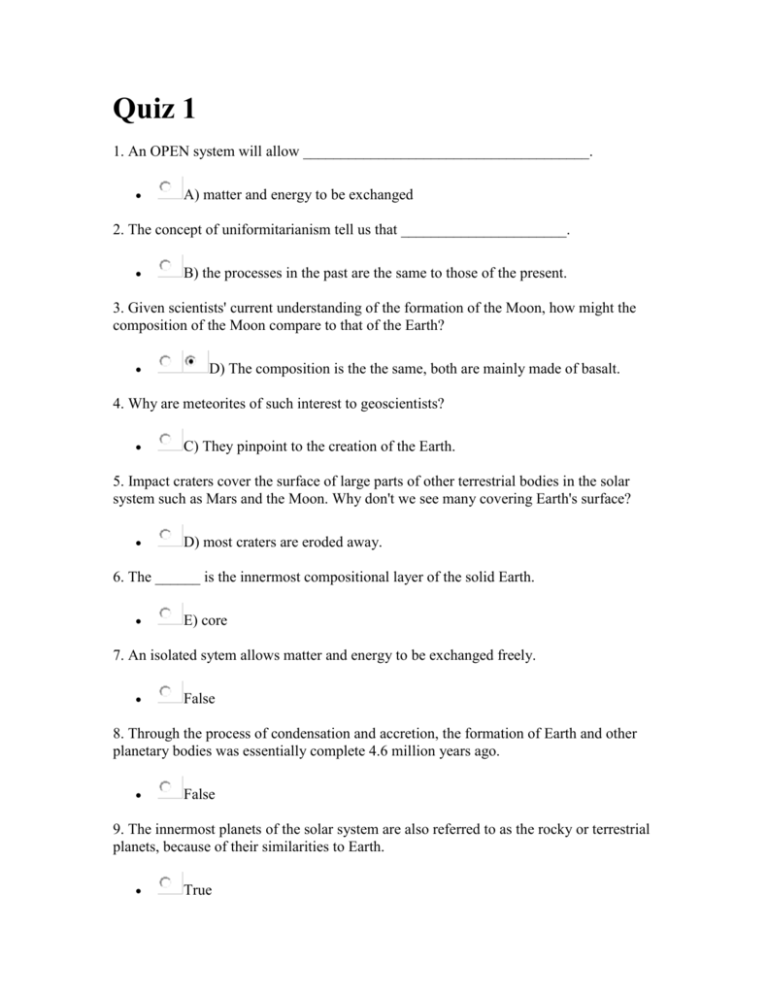
Quiz 1 1. An OPEN system will allow ______________________________________. A) matter and energy to be exchanged 2. The concept of uniformitarianism tell us that ______________________. B) the processes in the past are the same to those of the present. 3. Given scientists' current understanding of the formation of the Moon, how might the composition of the Moon compare to that of the Earth? D) The composition is the the same, both are mainly made of basalt. 4. Why are meteorites of such interest to geoscientists? C) They pinpoint to the creation of the Earth. 5. Impact craters cover the surface of large parts of other terrestrial bodies in the solar system such as Mars and the Moon. Why don't we see many covering Earth's surface? D) most craters are eroded away. 6. The ______ is the innermost compositional layer of the solid Earth. E) core 7. An isolated sytem allows matter and energy to be exchanged freely. False 8. Through the process of condensation and accretion, the formation of Earth and other planetary bodies was essentially complete 4.6 million years ago. False 9. The innermost planets of the solar system are also referred to as the rocky or terrestrial planets, because of their similarities to Earth. True 10. The upper mantle forms the outer most compositional layer of the solid Earth. False 11. The rock cycle describes the movement and interactions of large segments of Earth's lithosphere. False 12. A __________ system allows the interchange of only energy, but not matter. CLOSED 13. Scientists distinguish three kinds of systems: isolated, closed, and ______. OPEN 14. The four open subsystems of the Earth system are the lithosphere, hydrosphere, atmosphere, and ______. BIOSPHERE 15. The ______ cycle circulates water through various reservoirs: the ocean, the atmosphere, the lithosphere and the biosphere. WATER 16. The _________ cycle is defined as: the set of crustal processes that form new rock, modify it, transport it, and break it down. ROCK 17. The _____________cycle is defined as: movements and interactions in the geosphere and the internal Earth processes that drive them. TECTONIC 18. The growth process in which bits of solid matter gradually gathered together to form the planets is called ______. ACCRETION 19. The middle compositional layer of Earth, the______, lies between the core and the crust. mantle 20. The concept of ______ holds that the processes governing the Earth system today have operated in a similar manner throughout geologic time. uniformitarianism 21. __________ _____________ is concerned with the processes and the materials that compose the Earth. Physical geology 22. ____________ ____________, is concerned with the sequence of geologic events that have occurred in the past, through the study of fossils. Historical geology 22. What are the subsystems of the Earth system? The hydrosphere, the lithosphere, the atmosphere, and the biosphere 23. Rivers, lakes, ponds, glaciers, ground water and the oceans are the reservoirs of the ______________ ____________ . hydrological cycle 24. When volcanoes erupt, the lava provides with nutrients to the soil. This type of interaction is between the _________________________ lithosphere and biosphere 25. Geysers are produced when rain water percolates the surface and gets heated by magma that boils this water, then this water resurfaces as a column of steam and hot water. This type of interaction is between the _____________________________________ hydrosphere and lithosphere 26. How much percentage of the Earth is solid? 1% 27. What is the temperature that magma usually has inside a volcano? 2,000 to 10,000 degrees Celsius 28. How many active volcanoes do we have on Earth at this time? 1,500 29. What wa the biggest explosion that we had in modern times? Tambora in 1,815 30. What are the names of the three volcanoes discussed in lenght in the video? 1) Eyjafjallajökull, Iceland 2) Vesuvius, Italy 3) Yelowstone, US 31. In the illustration below, which of the three models depicts an “closed system?” Model B
